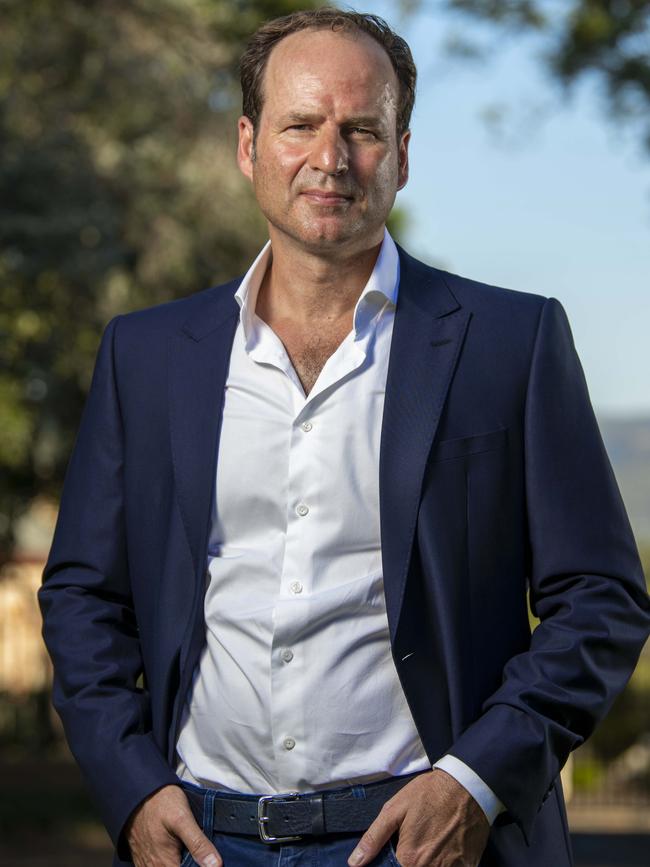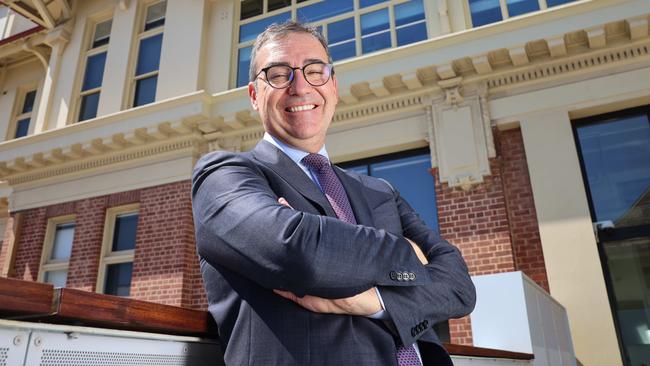Building a Bigger, Better South Australia: Historic chance to reverse $29bn decline
SA has a once-in-a-generation chance to rebound from the pandemic and end a $29bn decline, with tech innovation and the launch of our space academy leading the way.
SA News
Don't miss out on the headlines from SA News. Followed categories will be added to My News.
South Australia has a once-in-a-generation opportunity to rebound from the Covid-19 pandemic and reverse a long-term relative economic slide since the catastrophic 1991 State Bank collapse that has cost almost $30bn, an Advertiser investigation reveals.
The $29bn gap between SA’s economic output and the national average is about three times the total cost of the $9.9bn, 78km North-South Motorway, which includes more than 6km of tunnels and is due to be finished within a decade.
Stark gross state product figures, which measure the economy’s size, show SA’s growth since 1990-91 has averaged 2.1 per cent, compared to the national average of 2.9 per cent – if SA’s share had stayed at 1990-91 levels the economy would be $29bn larger.
In the same period, SA’s average income has been persistently below that of NSW, Victoria and the national average, while SA had the second-lowest average living standards of any state or territory, above only Tasmania.
More than $3bn in government-guaranteed funds was lost in the 1991 State Bank financial disaster, which triggered an exodus of major corporate headquarters and a brain drain to other states.
This brain drain has been arrested during the Covid-19 pandemic for the first time in decades and SA’s 3.9 per cent economic growth rate in 2020-21 topped the nation.
The Advertiser is putting long-term, sustainable growth firmly on the agenda for the March 19 state election with the Building a Bigger, Better South Australia campaign, which pinpoints the state’s historic opportunity to seize a prosperous, hi-tech future in the pandemic’s aftermath.
The campaign’s objectives include building the state’s productivity, halving payroll tax in regional areas, growing SA’s population and forging a master plan for Adelaide that encourages sensible growth.
The campaign, which also includes a teen parliament this Friday in the House of Assembly to share kids’ big ideas, will culminate with a March 4 Building a Bigger, Better SA lunch event at SkyCity Adelaide, with the state’s most influential people across business, politics and other key sectors, placing economic and jobs growth at the heart of the election.
The Advertiser investigation also finds the state’s debt is projected to balloon to more than $33bn in 2024-25 and annual repayments will soon hit $1bn.

Other figures highlighting the challenge facing the state include:
SA has the lowest national proportion of people aged 25 to 44 with a bachelor or postgraduate degree;
SA workers’ productivity has declined since the early 2000s, while economic output has been persistently behind the national average since the 2008 Global Financial Crisis;
BUSINESS research and development spending has almost halved since 2008, leading to Tasmania overtaking SA for the first time; and
THE public sector has swollen since 2009-10 and equates to 6.4 per cent of State Government spending.
But PwC Australia chief executive officer Tom Seymour, whose professional services firm on February 10 announced it would employ 2000 people in skilled jobs at a national hi-tech hub in Rundle Mall, said SA was developing an ecosystem of hi-tech firms.

“You’ve really found an industry which is going to be a huge growth industry in terms of skilled jobs of the future. Building momentum in that will be a big thing,” he said.
“The next wave will be what are the adjacent industries to cloud engineering and cyber, and how do you attract them? That’s where a lot of large business wealth is going to be created in the future.
“I think immigration is going to play a critical role. If you come to Australia, this is a pretty good place to come – Adelaide has everything.

“You go through the list of what does a great city have; you’ve got it all. Now you’ve got the jobs to drive that growth so it’s really focusing on building out that ecosystem.”
SA Productivity Commission chairman Adrian Tembel says the future is the next wave of entrepreneurial business people – typified by someone “young, well-trained, smart and hungry”.
He says the decision announced on February 10 by PwC to create skilled jobs in Adelaide demonstrates that the city is becoming a destination for mid-level professional jobs.
“They connect up with a group of mathematicians at the University of Adelaide, or in a new research institute that the state government might create. Then they come up with an idea and they’ve got the motivation and energy to take on the world,” he said.
“It’s going to be a smart 25-year-old, hopefully from a working class area, who’s got a great university education and gets a skilled job at somewhere like PwC.
“Meanwhile, there’s some great engineer or mathematician who won a state government scholarship and did a PhD with his mates. That’s what kept him in Adelaide.

“They become friends at the pub. They hatch the idea. That’s what will take us to that national growth of 2.9 per cent and give us that extra $30bn. That’s our kids or maybe even our grandkids.”
Premier Steven Marshall’s economic case for re-election is pinned on having started a reversal of years of decline with nation-leading growth, creating thousands of jobs by attracting hi-tech firms to establish Adelaide bases and for the past two years attracting more people to SA than have left for interstate – reversing the brain drain.
The centrepiece of Labor’s economic pitch revealed thus far is a $593m hydrogen power plan. A hydrogen-fired power station designed to cut electricity bills and create thousands of jobs would be built, owned and operated by a Labor state government.





